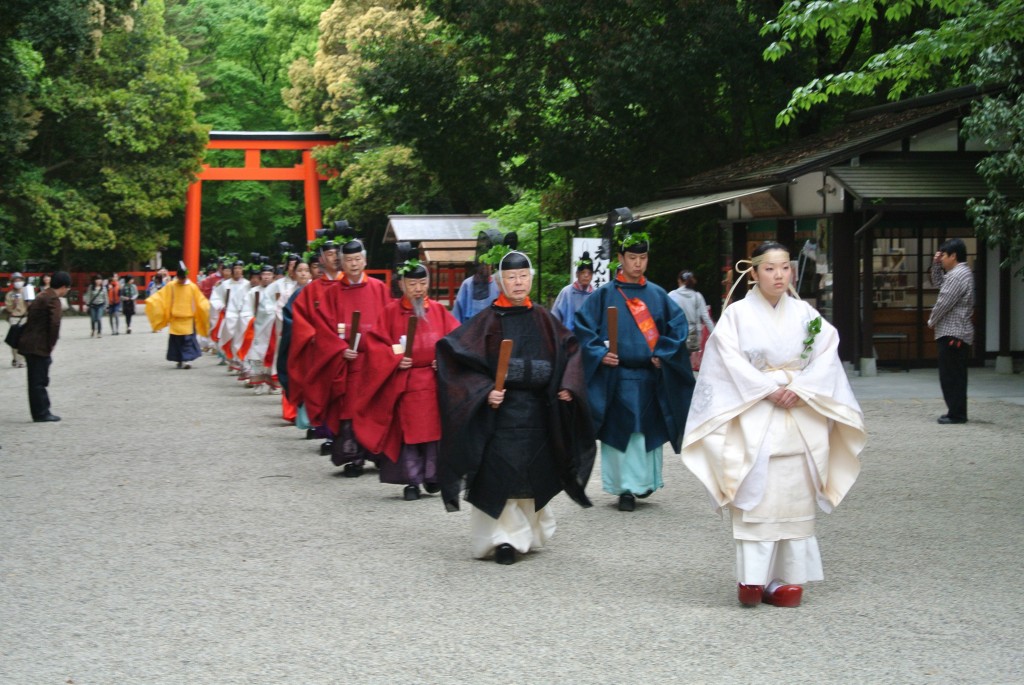
A purifying priestess leads the procession at a pre-Aoi event at Shimogamo Jinja, wearing an aoi-katsura combination (known as kikkei)
Following the recent series on the Aoi festivities in Kyoto, I’ve been wondering about the male-female significances. These concern in particular the aoi plant and the katsura tree, two emblems worn by participants in the festival. Both have similar shaped leaves. Aoi is often translated as hollyhock, though it’s not a true correspondence, and katsura according to my dictionary is the Japanese Judas Tree. No doubt that’s also misleading.
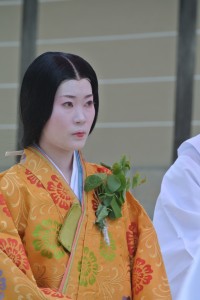
Participant in the Aoi Festival wearing an aoi and katsura set
It seems that the deity of Kamigamo, Kamo Wake-ikazuchi, appeared in a vision to his grandfather in which he declared that he wished to be worshipped in a specific way, which included decorations of aoi and katsura. The leaf of one and a sprig of the other are often combined, as in the picture above. If I’m not mistaken, the priestess is acting in the role of Inkonome (忌子女), symbolically purifying the way of the procession behind her (hence her white clothing). Her headband is made of hemp (asa) and the single non-white element is the hollyhock-katsura combination.
The katsura tree reaching up to heaven is a yang symbol, while the delicate aoi plant close to the earth represents yin. While Shimogamo and Kamigamo have taken up the aoi as their emblem, it’s interesting that Hiyoshi Taisha and Matsuo Taisha, two shrines connected with the influential Hata clan, have a katsura as their sacred tree. (Because of the way it burns, katsura is associated with metal production, though I’m not sure if that’s relevant here.)
The Hata and the Kamo clans, both of whom settled in the Kyoto basin before the capital was established in 794, apparently had a marital alliance in ancient times. I wonder if it’s idle speculation to think that the male-female connotations of their respective shrines may be linked to their history. According to tradition, it may have been a member of the Hata family who made the Kamo princess pregnant with the thunder deity Kamo Wake-ikazuchi. Do the shrine’s emblems symbolise the part played by the male and female clan members in this?
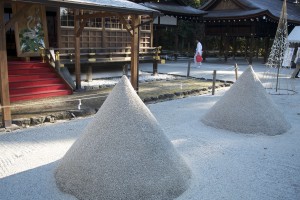
Yin-yang mounds at Kamigamo. The nearer one has two pine needles to denote that it's the male.
It’s interesting in this regard that the Kamo priests should have become experts in Onmyodo (Way of Yin-Yang). The two mysterious sand mounds at Kamigamo Jinja are usually explained in terms of seen and unseen, light and shadow, yin and yang. John Nelson in a monograph entitled ‘Of flowers and phalli’ goes even further, claiming that archaic, pre-Yamato sexual symbolism is evident at the shrine. One of the mounds is male (two pine needles protruding at the summit), the other female (three pine needles), he claims. He also suggests that the aoi emblem around the shrine is depicted simply with limp leaves at various yin points but with an erect flower at yang points.
There are strong yin-yang and phallic elements in the Kamo founding myth, in which Princess Tamayori was sat by a river (feminine yin symbol) when a red arrow came floating past (male yang symbol). The result of her taking the arrow home was a rather magical pregnancy, which just shows the potency of yin-yang combinations. Sitting here now in downtown Kyoto, I can’t help wondering if something of the distinctiveness of this wonder-full city, which has given so much to the world in terms of arts and aesthetics, may not derive from the yin and yang energies tapped into by the city’s ancient shrines.
If power spots are like acupuncture points for the earth, the shrine locations may be harnessing powerful male and female energies. Perhaps the aoi and katsura signify more than we realise…
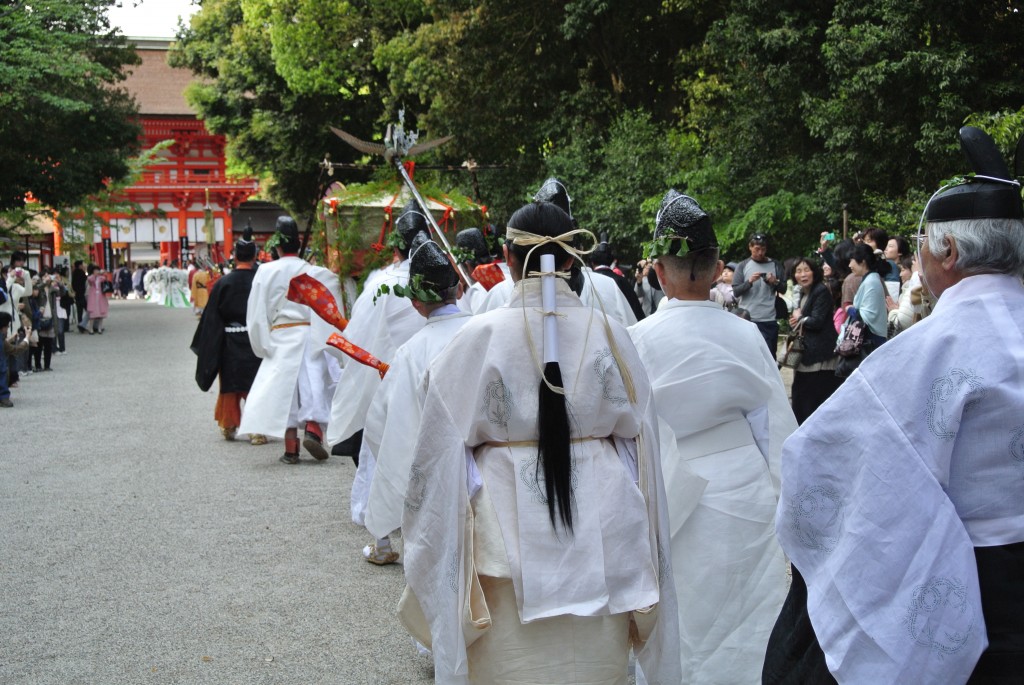
Standing at the confluence of two rivers, Shimogamo may be a power spot with a feminine orientation.
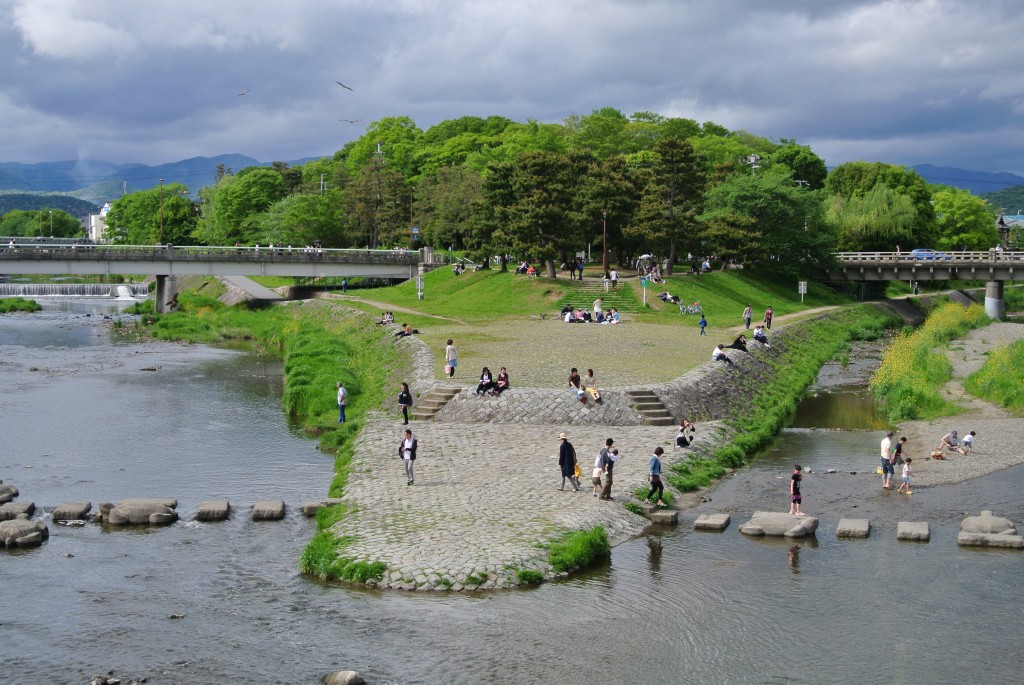
Shimogamo is located at the confluence of the Kamo and Takano Rivers, a place associated with high energy flows
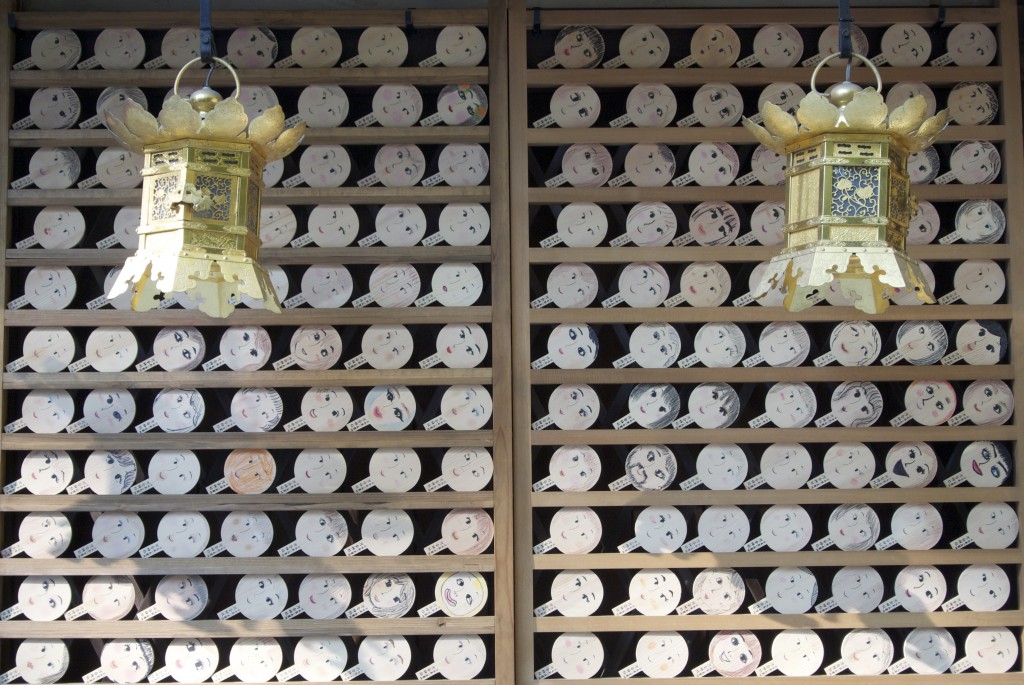
A sign of Shimogamo's feminine leanings? Kawai Jinja, a subshrine, specialises in prayers by women to be more beautiful.

Very interesting post John. I enjoyed the point about the sacred areas being a kind of pressure point. I think there are many reasons the two Kamo Shrines have their present locations. One very important one is that Shimogamo Shrine lies above one of the richest underground water veins in the city. This water actually flows through Gosho and then into the present Nijo Castle area. Good water, plentiful wells had to equal a premium location, sacred location. My impression of early land divination was that one factor or skill was the ability to recognize good water locations. The North Shrine, Kamigamo, was and is a protector of water from the north. In addition, its position at the base of the mountain, with rivers flowing down from the mountain and through the shrine, matches a common position for early shrines. Finally, not sure where I get this insight, it might be your book on Kyoto, but it has been said that the Kamigamo is light and open, very ying, whereas Shimogamo is covered with forest and dark, very yang. To find how these onmyodo decisions have influenced Kyoto, is surely a rich and rewarding area for research.
Many thanks for that, Paul. You make some good points, and there’s no doubt that the huge underground water basin beneath Kyoto (bigger than Lake Biwa!) must have water flows that affect the earth energy.
Thanks also to Joe Cronin, who has written in with an important quotation from John Nelson’s ‘Enduring Identities’…. “I believe that during the miare-sai the kami’s numinous energy is invested in an aoi flower, which serves as the “sacred essence” (goshintai) of the kami.” p. 219
A brilliant post as always, thanks, love the details, photos and exposition on clan genealogy and yin yang heritage. The shrines in the area not only manifest the hold that yin yang ideas had on the ancient Japanese, but also the many rules and laws of the four compass points, evil expulsion and other astrological ideas of the age.